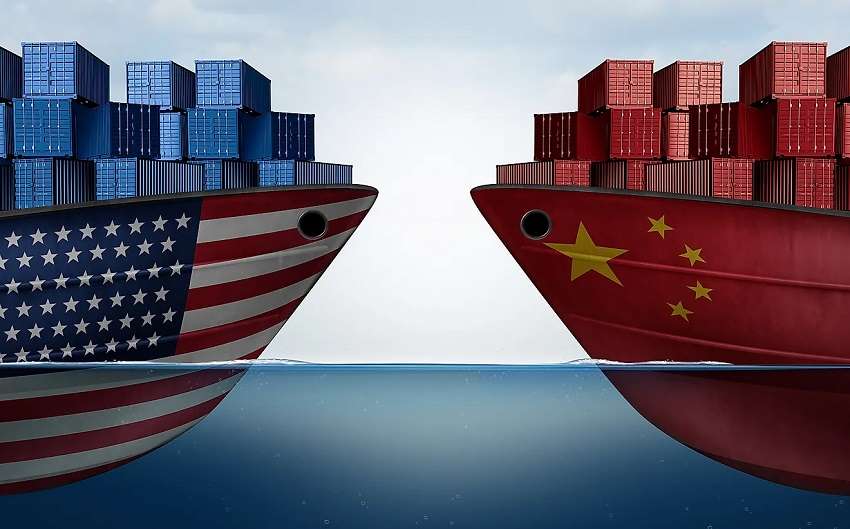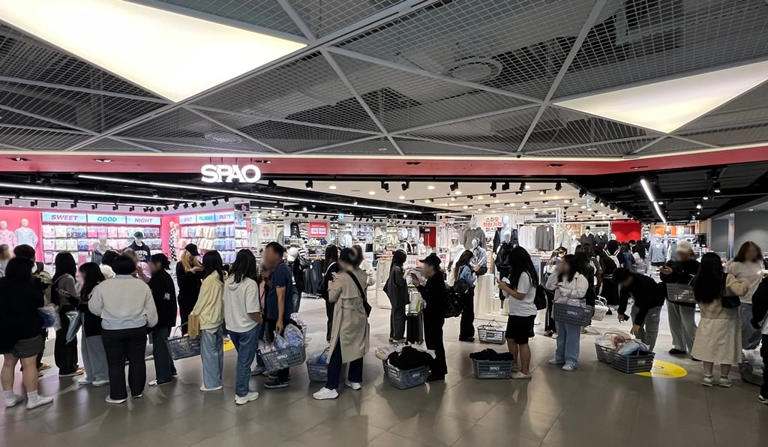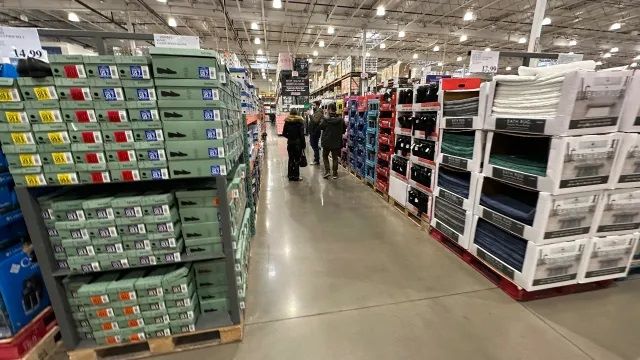FW
While companies around the world have been unveiling innovative textiles with the use of latest textile technology, experts feel that the trend has also made it extremely difficult for consumers to identify the fabric quality while shopping. They feel that it must be mandatory for the companies to use textile labelling for the consumers to make an informed choice.
Most of the countries around the world do have mandatory textile labelling policies. In Canada, for example, the Textile Labelling Act not only ensures complete label information on a wide range of textiles and textile products, but also provides specific provisions to protect consumers from misleading advertising. In the United States, on the other hand, the Federal Trade Commission enforces a similar law and in the United Kingdom, the Textile Products (Labelling and Fibre Composition) Regulations protect the interests of textile consumers.
While India also had a regulation in place mandating labelling of textiles, ignorance by the union government in 2007 made sure that no one bothered about it. The Textile (Consumer Protection) Regulation 1988 made label information mandatory on all textiles. This not only helped consumers make the right choice in respect of the fabric, but also protected them from misrepresentation on quality and manipulation of price at the retail level. The Regulation prohibited incorrect, misleading, illegible or spurious markings. However, in 2002, the consumer affairs ministry removed textiles made of silk, man-made cellulosic and non-cellulosic spun fibres and man-made cellulosic and non-cellulosic filament yarns.
Later another amendment to the Essential Commodities Act in 2006 (that came into effect from February 2007) removed cotton and woollen textiles too from the Act, which entirely put a full-stop to labelling requirement. However, experts are of the opinion, the law needs to be enforced in the country again for the benefit of the consumers.
Textilescommittee.nic.in
The Italian denim industry has triumphed at the second edition of the Global Denim Awards in Amsterdam. A jury of international denim experts selected Sartoria Diletto and Italian mill Candiani Denim as the winning collaboration for this year’s best collection.
Over 750 denim professionals from around the globe were present at the runway show, while eight selected designers were linked to eight denim mills to showcase capsule collections. The teams combined their combined craftsmanship, original designs, and denim innovation.
Denim mill Berto Industria Tessile won the honorary best fabric award as a recognition for its innovative denim fabrics. Mariette Hoitink of HTNK Fashion Recruitment & Consultancy expressed the uniqueness of having the world of denim, which included visitors from Japan, Colombia, India, United States and many other countries– gathering together to preview the future of denim.
The winning collection will be exhibited during the Kingpins shows in Amsterdam, New York and Hong Kong as well as during Amsterdam Denim Days. The collections were judged by an international jury of denim industry experts comprising Pierre Morisset (head designer of G-Star RAW), Menno van Meurs (co-founder of Red Wing Shoes Amsterdam and Tenue de Nîmes), Amy Leverton (author of the book Denim Dudes) and Adriano Goldschmied (denim expert and founder of Diesel, Replay and Gap 1969 and founder of Goldsign). Unique design, innovation, craftsmanship and sustainability were the key factors behind selecting the winning capsule collection.
Recently, The Wall Street Journal reported that Nike, the best-selling sportswear brand in China’s saw sales grow 30 percent for the three months ending August from the previous year. Similarly, Anta Sports Products, the largest local player, clocked a 24 percent y-o-y rise in sales during the first half of the year, while its smaller peer, Xtep International garnered 12 percent.
Now, more Chinese consumers are paying attention to health and sports. According to CLSA, between 2011 and 2014, the number of marathons and marathon participants has more than doubled. Morgan Stanley reports that there were more viewers a game for basketball as the Chinese Basketball Association’s finals saw 50 percent rise this year than the last. Besides, China even won the bid to host the 2022 Winter Olympics.
Around the time China hosted the 2008 Summer Olympics, sportswear sales were booming. However, this quickly turned into a bust for sportswear makers because they over-invested, thus they in 20132 and 2013 they closed stores. According to HSBC, the store count today is 18 percent below its 2011 peak for six Hong Kong-listed sportswear firms. Even the small, unlisted players shut shop.
However, a combination of fresh demand and disciplined supply has again led to a rise in sales and profit. Xtep, for example is upgrading to higher-margin footwear in which consumers can actually run marathons, compared to shoes earlier, which only looked sporty. As per Morgan Stanley, since petrochemicals make up roughly a quarter of raw-material costs, low oil prices too help. Consumers in China now are showing an interest in sports by not just watching them, but playing them too, which is a great opportunity for investors.
Pakistan has introduced some measures for improving the textile industry. These include: imposition of 10 per cent regulatory duty on the import of yarn and fabric, especially from India, provision of long term financing to the ginning and spinning sectors and a reduction in long term financing and export financing by one per cent.
Yarn rates have risen only slightly in the domestic market but the off take remains mostly low. Thus only moderate enquiries for yarns are being received by mills. There are reports that considerable quantities of seed cotton from Sindh are being sold in Punjab due to the higher rates there.
Though yarn prices have increased moderately, cotton prices have risen further this week. Cotton rates have gone up because mills desire to produce a higher quality of yarns and textile products for the export market.
In Karachi nearly 1.4 million bales during the current season have been booked for imports till now and may total about 2.5 million bales during the current season. Quality damage has also been reported in the current domestic crop leading mills to go for imported cottons.
Domestic mills have also reportedly covered more cotton recently due to problems of lower quality of lint which may persist in the local cotton for the remainder of the season.


Messe Frankfurt (HK)’s Senior General Manager, Wendy Wen, said, “While this has been our biggest autumn edition to date in terms of the number of exhibitors, what has been more pleasing is the success, fair participants have had over the three days. The increase in internationalism of exhibitors and buyers has benefited both groups, while the country pavilions and product zones, most of which grew in size this year, have proved a great success in terms of facilitating business, and have also helped to provide a focus to the fair as it grows bigger.”
Specialised country pavilions and product zones
A lot of efforts were taken by the organisers to ensure that, as the fair expands in size, exhibitors and buyers can still do business effectively and efficiently. “This year the fair featured 11 country and region pavilions, 11 group pavilions and six product zones which created an impression of having smaller, specialised fairs under one roof, which really benefited both exhibitors and buyers,” Wen explained.
Exhibitors such as Lanificio F.lli Cerruti in Italy’s Milano Unica Pavilion were just one of those to profit from this. “It’s important to have the Milano Unica Pavilion as being here is really good for our brand image,” Daniele Sanzeni, CEO and Managing Director explained, adding, “The buyers coming here already know our brand and know that we provide top quality products, and are more willing to purchase here. The visitor flow of the first two days was incredible, and we met a lot of customers not only from China, but also from overseas including Japan, Korea, Thailand and the Middle East.”
The advantages of these areas got extended to buyers too. As Domenic Colaianni, Product Developer at Berkeley Apparel from Australia said, “The pavilions and product zones benefit us as instead of going to Europe we come here to select our fabrics, either at the European pavilions or from Chinese mills, so we can do both here. It gives us a variety of styles, products and fabric choices to choose from.”
Global touch attracts exhibitors and buyers
As the fair has developed over the years, it has increasingly become a meeting point for the global industry, rather than just the Chinese market, this was felt strongly by many of this year’s participants. “I found many good international and local brands that I might consider working with. It is just the first day, but I have already placed orders with Korean and Chinese companies,” Michel Baron, from Kazar Trade Co, Brazil said.
Taiwanese exhibitor Far Eastern New Century Corp’s Eric Hu, President, Textile Industry said, “Intertextile is an international fair for sure. The visitor flow has been fantastic, and on the second day we met customers from Switzerland, India, the UK and the US, just from half an hour of my observation.”
Intertextile Shanghai Apparel Fabrics – Autumn Edition 2015 was co-organised by Messe Frankfurt (HK); the Sub-Council of Textile Industry, CCPIT; and the China Textile Information Centre.
Milano Unica World concluded its cycle for 2015 following the success of the Shanghai VIII edition. Numerous projects for New Year are already in the making, increasing the spotlight on Milano Unica exhibitors. New textile/accessories trends will provide inspiration and substance to the production and serve as guidelines for designers regarding fabric choices. Meanwhile, the organisers say that a sort of synergy has developed between supply and demand, transforming matter and then consolidating it into shape.
“It is the law of elective visions that links the northern and southern parts of the world, making up the DNA of the S/S ‘17 trends” explains Stefano Fadda, Art Director of Milano Unica.
Trend research remains fundamental for Ercole Botto Poala, new President of Milano Unica, who says, “Despite social influence that winks to seasonless and genderless, colour and fabric trends, blend and research inspiration and important events that inspire collections, have always and will always exist.”
Firms are often influenced by the rapid and superficial rhythm of production, while the concept that only a profound creative process can invent solid and long-lasting ideas for the future remains constant. “Ideas are consolidated in the Trend Area of Milano Unica, an essential section in the heart of the tradeshow, where economic and creative efforts are formulated to provide clients with optimum service,” asserts Massimo Mosiello, General Manager of Milano Unica.
Four themes are proposed which can either coexist in one unique, intricate interpretation or evolve separately with the aim of satisfying creative and business demands for all sector operators. They are - Abyss - Depth as an inspiration, Nature and Artifice - A mosaic of real and artificial geometric landscapes, Africa Punk - Primitive and natural urban fabric and Pycho Bit - A hallucinatory trip into arithmetic progression.
www.milanounica.it
Mimaki a leading manufacturer of wide-format inkjet printers and cutting machines for the graphics, textile, apparel and industrial markets has come out with a new direct-to-textile inkjet printer, the TX 300P-1800. Mimaki offers wide format printers, large format printers, cutting plotters.
The latest printer is designed to meet the demand for smaller lot sizes, faster delivery times and the ability to quickly produce samples. It is available with a variety of ink types.
The eight-color inkjet printer features a new print head that ejects ink droplets at high speed to ensure accurate ink droplet placement with a high head gap. This makes the printer ideal for printing high quality images on all types of fabrics, including thicker and textured materials. It has been made to suit the distributed model of textile printing.
Other features include print speeds that are more than twice as fast as those of a conventional printer; stable textile transport that maintains optimum tension; a choice of sublimation dye, disperse dye, pigment, reactive dye and acid dye inks to meet a wide range of application needs; uninterrupted printing with automatic detection and cleaning of clogged nozzles; and the production of large, seamless patterns from a single image.
eng.mimaki.co.jp/
Vietnam will increase its capacity to produce cotton in order to satisfy the rising demand from garment exporters. Vietnam needs about 8.5 billion sq. mt. of fabric. The capacity to produce domestic fabric is about three billion sq. mt.
Local garment exporters need to use locally made cotton, or cotton produced by other member countries of the Trans Pacific Partnership free trade agreement, to be entitled to tax cuts when shipping products to other TPP markets. Countries have to abide by the yarn forward rule of origin, which means all items in a garment from the yarn stage onward must be made in one of the nations that are party to the TPP accord.
The TPP deal, which aims to liberalise commerce in 40 per cent of the world’s economy, was reached earlier this month. Vietnam last year produced over 9,00,000 metric tons of fiber types, but two-thirds were shipped overseas. In order to fully meet the demand for fabric, and comply with the requirements of the TPP and Vietnam-EU deals, there needs to be more incentive for business in the form of infrastructure and land use in industrial parks, improvement in sewage, and environmental management capacity.
After three days of intense activity at CNR Expo, Première Vision Istanbul closed its doors on the third edition. The event attracted 8,407 visitors, a 1.3 per cent rise over the October 2014 edition, including a 10 per cent increase in 1,530 international visitors.
“Premiere Vision Istanbul demonstrated its full power of attraction by welcoming 18 per cent foreign visitors. Our international professionals included, in particular, 24 per cent of visitors from CIS and Ukraine ; 11.5 per cent from Greece; and 10 per cent from Iran. The show's exhibitors also signalled a very positive development in terms of visitor profiles. In three editions, Première Vision Istanbul has confirmed its position as the premium hub for Middle East & Eastern Europe Fashion,” said Guglielmo Olearo, Première Vision International Show Director.
Around 161 exhibitors presented their collections for autumn/winter 2016-’17. Up by 5 per cent against the October show and comprised of Turkish companies (69 per cent) and international ones (31 per cent) from 15 countries including Italy, Germany, Portugal, France, Austria, Bulgaria, United Kingdom, Romania, the Netherlands (first participation), Lithuania, Morocco, China, India and Pakistan.
The event benefited from the active support of country's main professional associations: ITHIB (Istanbul Textile and Raw Material Exporters’ Association), UTIB (Uludag Textile Exporters' Association), Athib (Mediterranean Textile and Raw Materials Exporters Association), Eib (Egean Exporters Association) and the Turkish Ministry of Economy. The next edition of Première Vision Istanbul will be running from March 23 to 25, 2016.
“We will be rounding out the offer at the show and, starting with the March 2016 edition, proposing a manufacturing sector welcoming companies specialised in CMT (cut, make, trim) fashion manufacturing based in Turkey, Morocco and neighbouring countries. Our goal is to offer the show's visitors proximity, full-package offer,” said Guglielmo Olearo. Additionally, for the show's campaign, Première Vision Istanbul is continuing its story of iconic stars. After Arzu Kaprol for its Istanbul October 2015 edition, Première Vision has selected the globally recognised and talented Turkish designer Bora Aksu.
www.premierevision-istanbul.com
Nandan Denim Limited (NDL), India’s second largest integrated denim fabric company has one of the largest manufacturing capacities in the world. NDL is a part of leading conglomerate, Chiripal Group, established in 1972 and is currently diversified across several businesses like textiles, petrochemicals, chemicals, packaging, infrastructure, and education.
Deepak Chiripal, CEO, NDL, says that the company continued to increase its penetration of international markets to drive its exports business as revenues from exports grew 75 per cent –yo-y to reach Rs 1,36.3 crores in fiscal year 2015, from Rs 77.7 crores in fiscal year 2014.
Speaking about the evolution of denim, Chiripal believes that denim has evolved from humble casual wear to haute couture today. It is a universal fabric and not just a commodity, but the lifeline of fashion. In this context, Chiripal states that NDL is optimistic about the prospects of the domestic denim industry. Today’s youth is increasingly turning towards denim, and the company wants to capitalise on this opportunity promising to give the youth an international fabric at a local price. Chiripal says India has one of the lowest per capita consumption of 0.3 pairs in the world, with far more opportunities in the offing.
Thus, with rising denim demand, the company is well-placed to meet it and has spearheaded a capacity expansion programme at a project cost of Rs 612 crores for which the debt tie-up is completed. The installed capacity will stand at 110 million metres per annum (MMPA) of denim fabric, 124 tonnes per day (TPD) of spinning facility and 10 MMPA of Yarn Dyed Shirting facility, after the commissioning of the expansion project. Chiripal says that the project will be completed on time by the first quarter of 2017.












